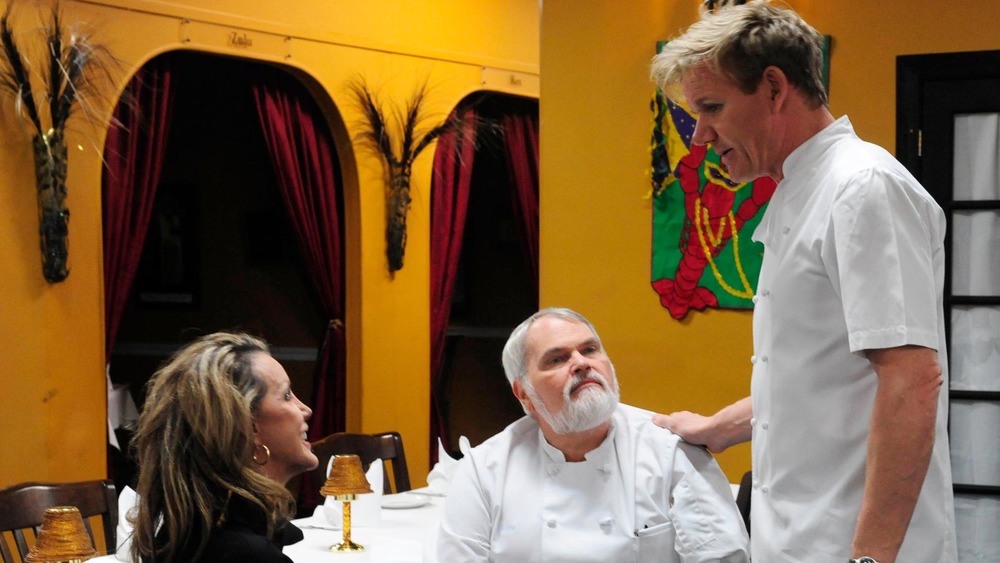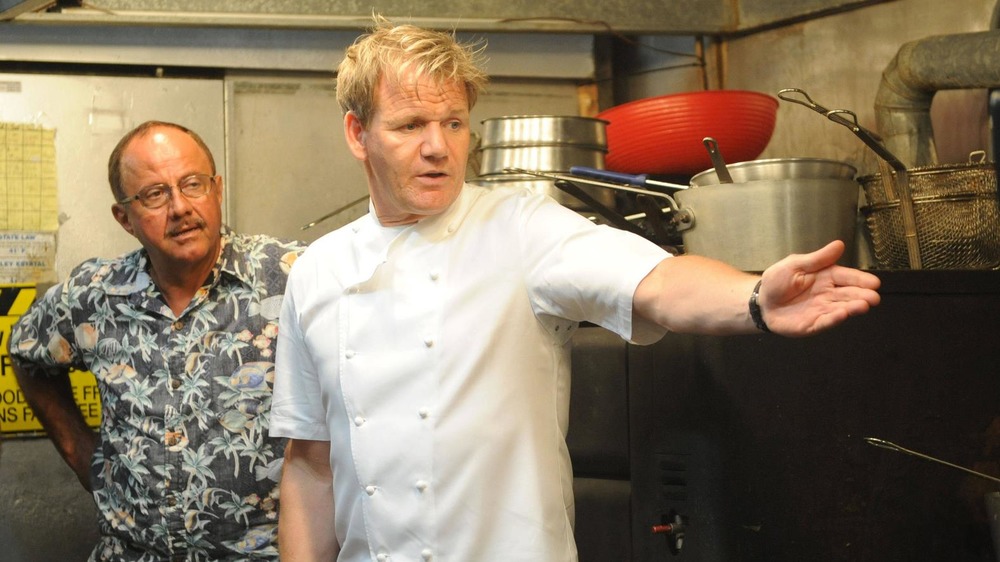The Real Difference Between The UK And US Version Of Kitchen Nightmares
If you've been on the internet long enough, then chances are you've seen the train wreck that is the Amy's Baking Company episode of Kitchen Nightmares (and if you haven't, then trust us when we say you're in for an hour of reality TV gold).
In the episode, Gordon Ramsay – in typical Gordon Ramsay fashion – serves up a plate of piping hot criticism for lackluster owners Amy and Samy Bouzagalo, ultimately setting the scene for some of the best drama that the show has ever produced. The infamous cook even walked off and quit taping!
Thanks to moments like this, Kitchen Nightmares has found a home in living rooms all across the United States. Gordon Ramsay hurling insults on a too-loud TV? That's just an average night in an American household! But many people don't know that before the US version, there was actually a very different Kitchen Nightmares set in the UK.
Gordon Ramsay isn't half bad in the British Kitchen Nightmares
Believe it or not, the UK Kitchen Nightmares isn't much of a nightmare after all. Gordon Ramsay first launched the show back in 2004 on Channel 4 (via The Guardian). At the time, restaurant owners rejoiced in the respected chef's arrival. In comparison, US restaurant owners were either angry, absolutely panicking, or both upon Ramsay's arrival. Reel Rundown notes that very rarely did participants in the British version actually get into confrontations with Ramsay, which eventually became regularly scheduled programming on the US edition.
The Rusty Soapbox states that the most notable difference between the two is that Ramsay narrates each of the UK episodes himself. While the UK version is more documentary-style, the US version is quintessential reality TV. According to IMDb, the booming voice that takes viewers on Kitchen Nightmares USA's wild ride comes from Arthur Wilson.
Kitchen Nightmares USA heightens the reality drama
Unlike the British version, Kitchen Nightmares USA pushes the envelope when it comes to production. Ominous music? Check. Overzealous narrator? Check. A ridiculous amount of profanity sprinkled throughout? Check, check, check.
Instead of focusing on the logistical side of running a restaurant, the US edition followed the time's reality TV trends and sensationalized every word a participant said. As Reel Rundown states, the American Kitchen Nightmares was less about the businesses and more about the aggressive persona that viewers came to expect from Ramsay. The Guardian even reports that after making the leap across the pond, participants were ordered to only address him by his formal title, Chef Ramsay.
If there's anything the two versions have in common besides Ramsay himself, it's one thing and one thing only: Nearly all of the once desperate restaurants eventually failed. As of May 2020, Reality TV Revisited estimates that 79 percent of all featured Kitchen Nightmares restaurants have closed.


